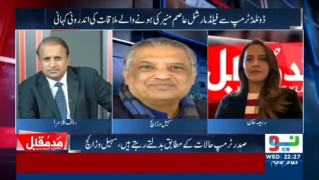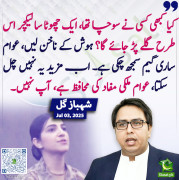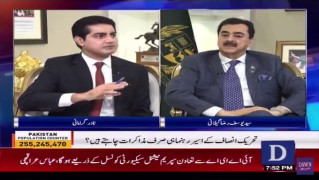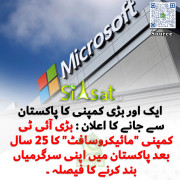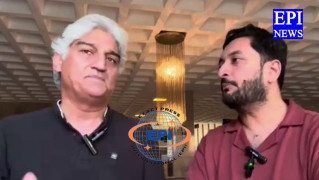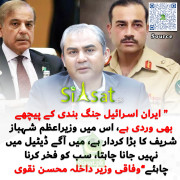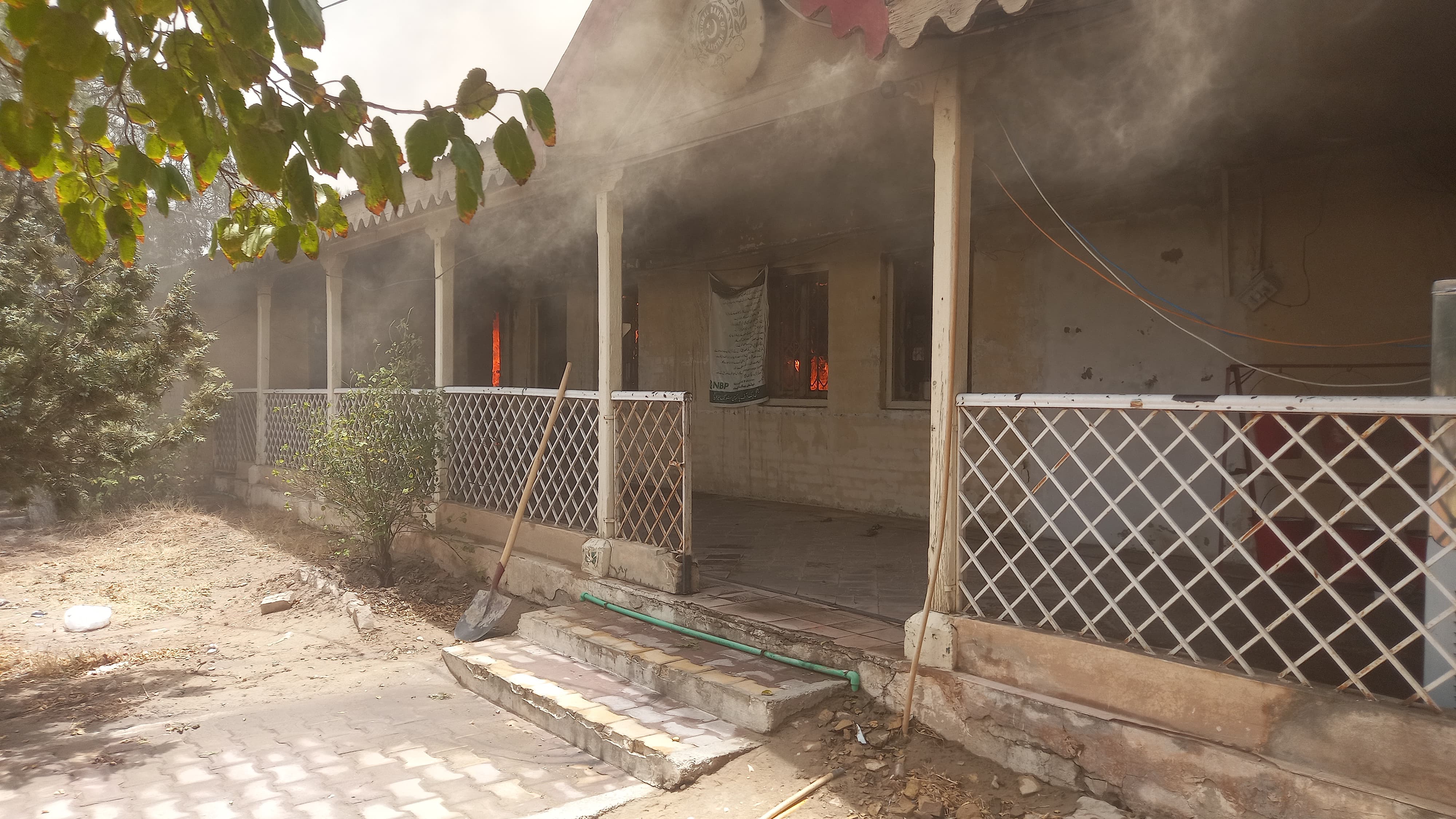Aurangzeb, a stranger no more

Aurangzeb: The Man and the Myth Audrey Truschke Penguin Random House Rs 399
A historian retells the complex and contested life of the sixth Mughal emperor, keeping away from hagiography or undue resurrection
Among the Mughal rulers, Babur and Aurangzeb are the most popular in social media among Bhakts of an ideology that has been working hard for the last three years to foist Hindi, Hindu, Hindustan as the sole narrative of a country where custom, costume and customary beliefs change every few kilometres. Social media is the new battleground where anyone holding a divergent view is quickly labelled anti-national or aulads (descendants) of Babur and Aurangzeb. Happily aided by the government, Aurangzeb’s name is being defaced from central vistas and who knows even from school textbooks tomorrow.
Therefore, it is interesting that the idea of Audrey Truschke’s magnificent biography of Aurangzeb took seed on Twitter where firmans are made and executed in 140 characters. Fortunately, some firmans, in this case a request to write on Aurangzeb, got implemented through a scholarly work.
Sticking to facts
Coming a year after her magisterial Culture of Encounters: Sanskrit at the Mughal Court, in Aurangzeb Truschke employs the tools of an ace academic researcher but makes it accessible to everyone through her racy language that never loses sight of facts and history. It is history that has been unkind to Aurangzeb, painting him all in grey, a terrible ruler who undid the legacy of his great-grandfather Akbar, grandfather Jehangir and father Shah Jehan by razing temples and ordering mass murders of Hindus.
Mindful of extreme emotions that Aurangzeb evokes in India today, Truschke keeps herself away from either hagiography or undue resurrection. Rather, she ‘recovers’ Aurangzeb from the heap of fiction and lies. In the process, she does not mince words and challenges the scholarly, the popular and the bazaar versions of the life and reign of the sixth Mughal emperor.
Be it Sir Jadunath Sarkar, Pakistani playwright Shahid Nadeem, or Jawaharlal Nehru, Truschke establishes how each viewed Aurangzeb through a flawed lens, overemphasising his religiosity or ‘adherence to Islam’ as reasons why he became what he became. Nehru called him ‘a bigot and an austere puritan.’ Truschke bemoans such sweeping generalisations and points out how this image of a ‘reviled’ Emperor is often used against the Muslims.
Truschke does not lose her way through the complex and contested life of Aurangzeb. Her focus is on facts and she looks at Aurangzeb in a clinical fashion. Yes, he did destroy some Hindu temples and banned Holi but, as she points out, he also gave grants for maintaining temples and liberally donated land to Brahmins. Also, along with Holi, Muharram and Eid too faced action. Most important, Hindu bureaucrats were at the core of the Mughal empire during Aurangzeb, the period when it expanded the most.
Facts are not the only tools with Truschke nor does she indulge in a slanging match with those who revile Aurangzeb. Instead, she chooses a scholarly path of mapping his 50-year rule through three themes that comprehensively sum up the enigma of Aurangzeb: one, imperial bureaucracy; two, why he thought of himself as a moral leader; and three, Aurangzeb’s policies on Hindu and Jain temples.
In addition, her racy account of Aurangzeb’s reign looks at all the flashpoints that have gone into the making of his image. For instance, Truschke provides an insight into Aurangzeb’s handling of the so-called Rajput rebellion that, she argues, was more in the nature of a power struggle between the Mughals and Rajputs. Moreover, she establishes that the Rajput themselves were not united in their opposition to Aurangzeb. Also, Aurangzeb was even-handed in meting out punishment to his uncle Shaysta Khan for failing to put up a defence against Shivaji, as to his son Prince Akbar who had rebelled and, aided by a section of Rajputs, declared himself Mughal emperor.
Truschke is unsparing while dealing with the moral world of Aurangzeb, be it conversion of Hindus or destruction of temples like Vishwanath Mandir in Varanasi or of Keshava Deva in Mathura. But she does not fall for the oft-repeated reasons for Aurangzeb’s act. Instead, she asks why most temples were left untouched, especially in South India. Similarly, she points that the ban on alcohol was not specific to Aurangzeb’s reign but merely an extension of what Akbar and Jehangir had done. Not to mention that the policy of prohibition was a big failure.
Minor quibbles
Truschke mildly disappoints while discussing the Hindu bureaucrats in Aurangzeb’s reign. Three leading lights of his court, Raja Raghunatha, Chandar Bhan Brahman and Bhimsen Saxena, are part of her narrative but without the attention they deserve. Much of the criticism against Aurangzeb is based on his alleged anti-Hindu bias, and for a biography that successfully recovers the Mughal emperor for contemporary readers, it would have helped to flesh them out further since most of them were not merely officials but scholars in their own right. Chander Bhan Brahman’s classic historical biography by Rajeev Kinra proves this.
Overall, Aurangzeb is a fascinating biography of an emperor who continues to dominate the contemporary discourse on the Hindu-Muslim relationship and beyond. Strongly recommended for everyone, scholars, students and general readers, Aurangzeb is an example of how historical biographies of complex characters can be written.The book addresses Aurangzeb’s concern at the time of his death that he came as a stranger and would leave as a stranger. Truschke has helped take away much of that strangeness.
Aurangzeb: The Man and the Myth; Audrey Truschke, Penguin Random House, ₹ 399.
source : http://www.thehindu.com/books/books-reviews/aurangzeb-a-stranger-no-more/article17408332.ece


Hindus, Muslims and colonial blinkers
At a time when Muslims find themselves under siege in India and are being hunted like animals on the benign watch of the BJP government, two brave new books by a Stanford University professor have revisited a time when the minority demonised today ruled the country.
Hindus and Muslims lived in harmony under Muslim rulers, including under the powerful Mughal dynasty that had ceded power to the British before India won independence, finds Audrey Truschke. She teaches religious studies at Stanford and is an authority on South Asia’s cultural and intellectual history.
In her fascinating book, ‘Culture of Encounters: Sanskrit at the Mughal Court’, Truschke argues that the heyday of Muslim rule in India – between the 16th century and the 18th century – had been one of “tremendous cross-cultural respect and fertilisation and not religious or cultural conflict”.
Emphasising that the high-level interaction between learned Muslims and Hindus was marked by collaborative encounters across linguistic and religious lines, her research overturns the common perception that Muslim rulers had been hostile to traditional Indian learning. The Mughals extensively patronised and engaged with Indian thinkers and ideas.
Much of the current religious conflict in India and the long-passed-down stereotypes about Muslims as mass murderers and destroyers of temples have been fuelled by ideological assumptions and distortions about the Mughal period, rather than an accurate rendering of history, notes Truschke.
And there are no prizes for guessing who started it all and contributed to the current climate of hate against Muslims. The divisive interpretation of the past began and developed during the colonial period from 1757 to 1947.“The British benefited from pitting Hindus and Muslims against one another and portrayed themselves as neutral saviours who could keep ancient religious conflicts at bay,” Truschke states. “While colonialism ended in the 1940s, the Hindu Right has found tremendous political value in continuing to proclaim and create endemic Hindu-Muslim conflict.”
She argues that the ideology underpinning such violence “erases Mughal history and writes religious conflict into Indian history where there was none, thereby fuelling and justifying modern religious intolerance”.Early modern-era Muslims were in fact “deeply interested in traditional Indian learning, which is largely housed in Sanskrit”, says Truschke, who is a frequent visitor to South Asia and spent much time in India and Pakistan, scouring numerous archives and sources as part of her elaborate study of original manuscripts.
The Muslim impulse in India had never been aimed at dominating the Indian culture or Hinduism. Instead, the new rulers enthusiastically embraced the Indian values, customs and civilisational heritage. Truschke rejects the notion that the origin of the Hindu-Muslim conflict began in medieval times and is a result of Muslim invasions of the Subcontinent.In her study of Sanskrit and Persian texts and authentic accounts of life under the Mughals, she provides the first detailed account of India’s religious scholars and intellectuals and their interaction with the Mughal elite.
No wonder she has invited the wrath of the saffron clan as her work flies in the face of Hindutva’s claims of the imagined oppression and persecution of Hindus under the Muslims. Still, the author hopes that her findings “will provide a solid historiographical basis for intervention in modern, political rewritings of the Indian past”.The book on the culture of encounters was followed a year later by another groundbreaking tome on perhaps the most controversial figure of Indian history. ‘Aurangzeb: The Man and the Myth’ is yet another bold and brave attempt to understand the life and times of the last great Mughal emperor who ruled for nearly half a century and whose reign covered the length and breadth of India, including Afghanistan and parts of Burma. She clears the cobwebs and distortions that have always clouded Aurangzeb’s image.
“The Aurangzeb of popular memory bears only a faint resemblance to the historical emperor,” Truschke notes. She seeks to sift fact from fiction and the man from the myth that has grown around him in popular imagination over the centuries, thanks to the biased telling of history as part of the British colonial project.Dismissing the popular myth that Aurangzeb had been driven by religious zeal and his rule was defined by the oppression of Hindus, she writes: “The multifaceted king had a complex relationship with Islam, but even so he is not reducible to his religion. In fact, little is simple about Aurangzeb.
Aurangzeb was an emperor devoted to power, his vision of justice, and expansion. He was an administrator with streaks of brilliance and scores of faults. He grew the Mughal Empire to its greatest extent and may also have positioned it to break apart. No single characteristic or action can encapsulate Aurangzeb Alamgir…”She bridges the chasm between the real and mythical Aurangzeb – the man and the emperor. He had his share of flaws, like any other human being. But he was not the crass villain and fanatic jihadist who was out to spread Islam with his sword that he is made out to be.
That Aurangzeb was a Hindu-hating fanatic is a myth of recent origin. He wasn’t perceived as such by the chroniclers of his times, including historians like Bhim Sen and Ishwar Das. It was in the late 18th century and later – when the British arrived on the scene – that the emperor, who was known for his religiosity and puritanical lifestyle, began to be vilified as a zealot by colonial historiographers.
He was complex – like all rulers are. He may have been guilty of demolishing some temples – which is not justifiable by any means –including the one at Kanshi, ostensibly after the wife of one of his Rajput commanders was molested. But he is also known to have bestowed vast grants on a number of temples and monasteries. The number of Hindu nobles at the Mughal court was the largest under him. His army was led by Rajput commanders like Raja Jaisingh and Jaswant Singh.
During his confrontation with his brother Dara Shikoh, he had 21 Hindu nobles on his side while his brother had 24. If he is famous for his conflicts with Hindu chieftains, including the Marathas and Sikhs, he also fought his own brothers and Muslim sultanates. He was no saint and was only human. This is what Truschke’s book seeks to stress – and with great conviction.
As a result, the brickbats and even abuse that the scholar has been receiving from Hindutva devotees – with many bhakts perpetually trolling her on social media – hardly come as a surprise. However, she is far from daunted and is already on to her next book, which is a study of the Sanskrit histories of Muslim dynasties. The purpose again is to revisit the past and free it of all biases of colonial historians.
In the current environment of intolerance, it is immensely courageous of the young author to undertake such projects for the sake of truth and academic honesty – if nothing else. This is what more and more historians need to do.History is a double-edged sword. It has been used widely and indiscriminately to deadly effect by everyone, poisoning young, impressionable minds and fuelling hate and enmity between communities.It was the successful exploitation of history that, coupled with religious sentiments over Ayodhya, helped the BJP grow from an extremist fringe to the party of power in India.
It is thanks to all the poison taught in history books and the sudden sense of machismo that Modi’s ascent has provided to the Hindutva rank and file that Muslims are being lynched and brutalised day after day.
If historians were to free themselves of their blinkers, they would discover that Islam was not spread in South Asia at gunpoint but through to the simplicity and honesty of Arab traders and the love and humanity of sufis.Rulers with Muslim names may have built some mosques and assumed lofty titles. But they neither represented Islam nor fought their wars for it. It was all for power. This is what needs to be recognised and established by objective chroniclers of history. This is why we need more honest scholars like Truschke: to call the bluff of the orientalists and the colonial project.
The writer is an award-winning journalist.
Source
Aurangzeb: The Man and the Myth Audrey Truschke Penguin Random House Rs 399
A historian retells the complex and contested life of the sixth Mughal emperor, keeping away from hagiography or undue resurrection
Among the Mughal rulers, Babur and Aurangzeb are the most popular in social media among Bhakts of an ideology that has been working hard for the last three years to foist Hindi, Hindu, Hindustan as the sole narrative of a country where custom, costume and customary beliefs change every few kilometres. Social media is the new battleground where anyone holding a divergent view is quickly labelled anti-national or aulads (descendants) of Babur and Aurangzeb. Happily aided by the government, Aurangzeb’s name is being defaced from central vistas and who knows even from school textbooks tomorrow.
Therefore, it is interesting that the idea of Audrey Truschke’s magnificent biography of Aurangzeb took seed on Twitter where firmans are made and executed in 140 characters. Fortunately, some firmans, in this case a request to write on Aurangzeb, got implemented through a scholarly work.
Sticking to facts
Coming a year after her magisterial Culture of Encounters: Sanskrit at the Mughal Court, in Aurangzeb Truschke employs the tools of an ace academic researcher but makes it accessible to everyone through her racy language that never loses sight of facts and history. It is history that has been unkind to Aurangzeb, painting him all in grey, a terrible ruler who undid the legacy of his great-grandfather Akbar, grandfather Jehangir and father Shah Jehan by razing temples and ordering mass murders of Hindus.
Mindful of extreme emotions that Aurangzeb evokes in India today, Truschke keeps herself away from either hagiography or undue resurrection. Rather, she ‘recovers’ Aurangzeb from the heap of fiction and lies. In the process, she does not mince words and challenges the scholarly, the popular and the bazaar versions of the life and reign of the sixth Mughal emperor.
Be it Sir Jadunath Sarkar, Pakistani playwright Shahid Nadeem, or Jawaharlal Nehru, Truschke establishes how each viewed Aurangzeb through a flawed lens, overemphasising his religiosity or ‘adherence to Islam’ as reasons why he became what he became. Nehru called him ‘a bigot and an austere puritan.’ Truschke bemoans such sweeping generalisations and points out how this image of a ‘reviled’ Emperor is often used against the Muslims.
Truschke does not lose her way through the complex and contested life of Aurangzeb. Her focus is on facts and she looks at Aurangzeb in a clinical fashion. Yes, he did destroy some Hindu temples and banned Holi but, as she points out, he also gave grants for maintaining temples and liberally donated land to Brahmins. Also, along with Holi, Muharram and Eid too faced action. Most important, Hindu bureaucrats were at the core of the Mughal empire during Aurangzeb, the period when it expanded the most.
Facts are not the only tools with Truschke nor does she indulge in a slanging match with those who revile Aurangzeb. Instead, she chooses a scholarly path of mapping his 50-year rule through three themes that comprehensively sum up the enigma of Aurangzeb: one, imperial bureaucracy; two, why he thought of himself as a moral leader; and three, Aurangzeb’s policies on Hindu and Jain temples.
In addition, her racy account of Aurangzeb’s reign looks at all the flashpoints that have gone into the making of his image. For instance, Truschke provides an insight into Aurangzeb’s handling of the so-called Rajput rebellion that, she argues, was more in the nature of a power struggle between the Mughals and Rajputs. Moreover, she establishes that the Rajput themselves were not united in their opposition to Aurangzeb. Also, Aurangzeb was even-handed in meting out punishment to his uncle Shaysta Khan for failing to put up a defence against Shivaji, as to his son Prince Akbar who had rebelled and, aided by a section of Rajputs, declared himself Mughal emperor.
Truschke is unsparing while dealing with the moral world of Aurangzeb, be it conversion of Hindus or destruction of temples like Vishwanath Mandir in Varanasi or of Keshava Deva in Mathura. But she does not fall for the oft-repeated reasons for Aurangzeb’s act. Instead, she asks why most temples were left untouched, especially in South India. Similarly, she points that the ban on alcohol was not specific to Aurangzeb’s reign but merely an extension of what Akbar and Jehangir had done. Not to mention that the policy of prohibition was a big failure.
Minor quibbles
Truschke mildly disappoints while discussing the Hindu bureaucrats in Aurangzeb’s reign. Three leading lights of his court, Raja Raghunatha, Chandar Bhan Brahman and Bhimsen Saxena, are part of her narrative but without the attention they deserve. Much of the criticism against Aurangzeb is based on his alleged anti-Hindu bias, and for a biography that successfully recovers the Mughal emperor for contemporary readers, it would have helped to flesh them out further since most of them were not merely officials but scholars in their own right. Chander Bhan Brahman’s classic historical biography by Rajeev Kinra proves this.
Overall, Aurangzeb is a fascinating biography of an emperor who continues to dominate the contemporary discourse on the Hindu-Muslim relationship and beyond. Strongly recommended for everyone, scholars, students and general readers, Aurangzeb is an example of how historical biographies of complex characters can be written.The book addresses Aurangzeb’s concern at the time of his death that he came as a stranger and would leave as a stranger. Truschke has helped take away much of that strangeness.
Aurangzeb: The Man and the Myth; Audrey Truschke, Penguin Random House, ₹ 399.
source : http://www.thehindu.com/books/books-reviews/aurangzeb-a-stranger-no-more/article17408332.ece


Hindus, Muslims and colonial blinkers
At a time when Muslims find themselves under siege in India and are being hunted like animals on the benign watch of the BJP government, two brave new books by a Stanford University professor have revisited a time when the minority demonised today ruled the country.
Hindus and Muslims lived in harmony under Muslim rulers, including under the powerful Mughal dynasty that had ceded power to the British before India won independence, finds Audrey Truschke. She teaches religious studies at Stanford and is an authority on South Asia’s cultural and intellectual history.
In her fascinating book, ‘Culture of Encounters: Sanskrit at the Mughal Court’, Truschke argues that the heyday of Muslim rule in India – between the 16th century and the 18th century – had been one of “tremendous cross-cultural respect and fertilisation and not religious or cultural conflict”.
Emphasising that the high-level interaction between learned Muslims and Hindus was marked by collaborative encounters across linguistic and religious lines, her research overturns the common perception that Muslim rulers had been hostile to traditional Indian learning. The Mughals extensively patronised and engaged with Indian thinkers and ideas.
Much of the current religious conflict in India and the long-passed-down stereotypes about Muslims as mass murderers and destroyers of temples have been fuelled by ideological assumptions and distortions about the Mughal period, rather than an accurate rendering of history, notes Truschke.
And there are no prizes for guessing who started it all and contributed to the current climate of hate against Muslims. The divisive interpretation of the past began and developed during the colonial period from 1757 to 1947.“The British benefited from pitting Hindus and Muslims against one another and portrayed themselves as neutral saviours who could keep ancient religious conflicts at bay,” Truschke states. “While colonialism ended in the 1940s, the Hindu Right has found tremendous political value in continuing to proclaim and create endemic Hindu-Muslim conflict.”
She argues that the ideology underpinning such violence “erases Mughal history and writes religious conflict into Indian history where there was none, thereby fuelling and justifying modern religious intolerance”.Early modern-era Muslims were in fact “deeply interested in traditional Indian learning, which is largely housed in Sanskrit”, says Truschke, who is a frequent visitor to South Asia and spent much time in India and Pakistan, scouring numerous archives and sources as part of her elaborate study of original manuscripts.
The Muslim impulse in India had never been aimed at dominating the Indian culture or Hinduism. Instead, the new rulers enthusiastically embraced the Indian values, customs and civilisational heritage. Truschke rejects the notion that the origin of the Hindu-Muslim conflict began in medieval times and is a result of Muslim invasions of the Subcontinent.In her study of Sanskrit and Persian texts and authentic accounts of life under the Mughals, she provides the first detailed account of India’s religious scholars and intellectuals and their interaction with the Mughal elite.
No wonder she has invited the wrath of the saffron clan as her work flies in the face of Hindutva’s claims of the imagined oppression and persecution of Hindus under the Muslims. Still, the author hopes that her findings “will provide a solid historiographical basis for intervention in modern, political rewritings of the Indian past”.The book on the culture of encounters was followed a year later by another groundbreaking tome on perhaps the most controversial figure of Indian history. ‘Aurangzeb: The Man and the Myth’ is yet another bold and brave attempt to understand the life and times of the last great Mughal emperor who ruled for nearly half a century and whose reign covered the length and breadth of India, including Afghanistan and parts of Burma. She clears the cobwebs and distortions that have always clouded Aurangzeb’s image.
“The Aurangzeb of popular memory bears only a faint resemblance to the historical emperor,” Truschke notes. She seeks to sift fact from fiction and the man from the myth that has grown around him in popular imagination over the centuries, thanks to the biased telling of history as part of the British colonial project.Dismissing the popular myth that Aurangzeb had been driven by religious zeal and his rule was defined by the oppression of Hindus, she writes: “The multifaceted king had a complex relationship with Islam, but even so he is not reducible to his religion. In fact, little is simple about Aurangzeb.
Aurangzeb was an emperor devoted to power, his vision of justice, and expansion. He was an administrator with streaks of brilliance and scores of faults. He grew the Mughal Empire to its greatest extent and may also have positioned it to break apart. No single characteristic or action can encapsulate Aurangzeb Alamgir…”She bridges the chasm between the real and mythical Aurangzeb – the man and the emperor. He had his share of flaws, like any other human being. But he was not the crass villain and fanatic jihadist who was out to spread Islam with his sword that he is made out to be.
That Aurangzeb was a Hindu-hating fanatic is a myth of recent origin. He wasn’t perceived as such by the chroniclers of his times, including historians like Bhim Sen and Ishwar Das. It was in the late 18th century and later – when the British arrived on the scene – that the emperor, who was known for his religiosity and puritanical lifestyle, began to be vilified as a zealot by colonial historiographers.
He was complex – like all rulers are. He may have been guilty of demolishing some temples – which is not justifiable by any means –including the one at Kanshi, ostensibly after the wife of one of his Rajput commanders was molested. But he is also known to have bestowed vast grants on a number of temples and monasteries. The number of Hindu nobles at the Mughal court was the largest under him. His army was led by Rajput commanders like Raja Jaisingh and Jaswant Singh.
During his confrontation with his brother Dara Shikoh, he had 21 Hindu nobles on his side while his brother had 24. If he is famous for his conflicts with Hindu chieftains, including the Marathas and Sikhs, he also fought his own brothers and Muslim sultanates. He was no saint and was only human. This is what Truschke’s book seeks to stress – and with great conviction.
As a result, the brickbats and even abuse that the scholar has been receiving from Hindutva devotees – with many bhakts perpetually trolling her on social media – hardly come as a surprise. However, she is far from daunted and is already on to her next book, which is a study of the Sanskrit histories of Muslim dynasties. The purpose again is to revisit the past and free it of all biases of colonial historians.
In the current environment of intolerance, it is immensely courageous of the young author to undertake such projects for the sake of truth and academic honesty – if nothing else. This is what more and more historians need to do.History is a double-edged sword. It has been used widely and indiscriminately to deadly effect by everyone, poisoning young, impressionable minds and fuelling hate and enmity between communities.It was the successful exploitation of history that, coupled with religious sentiments over Ayodhya, helped the BJP grow from an extremist fringe to the party of power in India.
It is thanks to all the poison taught in history books and the sudden sense of machismo that Modi’s ascent has provided to the Hindutva rank and file that Muslims are being lynched and brutalised day after day.
If historians were to free themselves of their blinkers, they would discover that Islam was not spread in South Asia at gunpoint but through to the simplicity and honesty of Arab traders and the love and humanity of sufis.Rulers with Muslim names may have built some mosques and assumed lofty titles. But they neither represented Islam nor fought their wars for it. It was all for power. This is what needs to be recognised and established by objective chroniclers of history. This is why we need more honest scholars like Truschke: to call the bluff of the orientalists and the colonial project.
The writer is an award-winning journalist.
Source
Last edited by a moderator:



